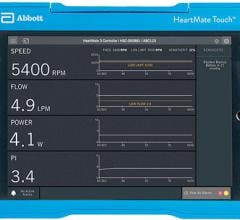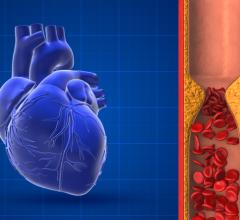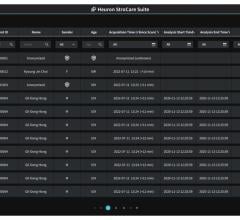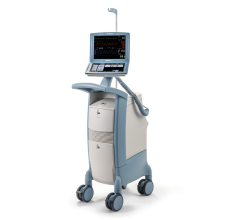
August 7, 2023 — Biosense Webster, Inc., a global leader in cardiac arrhythmia treatment and part of Johnson & Johnson MedTech,i today announced that several products in its market-leading cardiac ablation portfolio have received approval for a zero fluoroscopy workflow from the U.S. Food and Drug Administration (FDA). The products that can be used in this workflow include: THERMOCOOL SMARTTOUCH SF catheter -- the most commonly used ablation catheter in the world for RF ablation, THERMOCOOL SMARTTOUCH Catheter, CARTO VIZIGO Bi-Directional Guiding Sheath, PENTARAY NAV ECO High Density Mapping Catheter, DECANAV® Mapping Catheters, and Webster CS Catheter. The updated workflow indicates that direct imaging guidance, such as ultrasound, may be used as an alternative to fluoroscopy.
Fluoroscopy is a type of medical imaging that shows a continuous X-ray image on a monitor, and is used in a variety of examinations and procedures to diagnose or treat patients.1 Fluoroscopy can result in relatively high radiation doses, especially for complex interventional procedures which require fluoroscopy be administered for a long period of time.1 Reducing fluoroscopy lowers radiation exposure, which may minimize long-term cancer risk, and can reduce the risk of musculoskeletal pain due to extensive wear of heavy personal protective equipment, such as lead aprons.2
"Cardiac ablation procedures for the treatment of atrial fibrillation (AFib) usually require fluoroscopy to guide the advancement and positioning of intracardiac catheters, resulting in considerable radiation exposure for patients, operators, and support medical staff as well as a high orthopedic burden from protective equipment such as lead aprons,"2 explained Jose Osorio, MD, FHRS, President of Heart Rhythm Clinical and Research Solutions.ii "Eliminating or reducing radiation exposure is beneficial to patients as well as physicians and staff working every day in the electrophysiology lab."
"The label change approved by the FDA underscores that the Biosense Webster integrated ecosystem, anchored by the CARTO® 3 mapping and navigation system, together with our diagnostic and treatment catheters, enables workflows with zero fluoroscopy, which improves safety, and efficiency of cardiac ablation procedures," said Jasmina Brooks, President, Biosense Webster. "As a result of this update, our teams can now proactively discuss the fluoroscopy alternative workflow with our customers to reinforce the benefits of the Biosense Webster portfolio of products."
The company received the label change based on an observational, prospective, multicenter registry that assesses real-world catheter ablation clinical outcomes, including procedural efficiency, safety, and long-term effectiveness in a broad group of patient populations with novel radiofrequency (RF) technologies in paroxysmal AFib patients. The REAL AF Registry is a first-of-its kind real-world evidence registry in the electrophysiology field, led by physicians and supported by Biosense Webster since 2019.
"At Biosense Webster, we are committed to advancing innovative technologies that enable safe, effective, and efficient cardiac ablation procedures, as well as expanding the body of evidence supporting how our technologies are used to improve patient lives," said Anthony Hong, Vice President, Preclinical & Clinical Research and Medical Affairs, Cardiovascular & Specialty Solutions, Johnson & Johnson. "Our novel approach to evidence generation, utilizing real-world evidence from the REAL AF Registry, has helped us secure regulatory approval for our fluoroscopy alternative workflow, and I'm looking forward to utilizing this approach in the future to lower study costs and achieve faster regulatory milestones."
Cardiac arrhythmias are a growing epidemic. AFib alone is the most common type of cardiac arrhythmia and impacts nearly 37.5 million people worldwide, and 6 million people in the U.S.3,4 AFib is a progressive disease, and if left untreated can get worse over time or lead to other serious complications like heart disease or stroke.5,6 Catheter ablation is a safe and effective procedure to restore the heart's incorrect electrical signals, which causes an abnormal heart rhythm.7
For more information: www.biosensewebster.com
References:
i Johnson & Johnson MedTech comprises the surgery, orthopaedics, vision and interventional solutions businesses within Johnson & Johnson's MedTech segment.
ii Heart Rhythm Clinical and Research Solutions, LLC has received research funding from Biosense Webster Inc. for REAL AF Registry conduct and for supporting medical writing and statistical analysis of study related publications under the direction of the authors. Dr. Jose Osorio and the authors were not compensated for their effort in the publications.
1 FDA. Fluoroscopy: FDA. U.S. Food and Drug Administration. https://www.fda.gov/radiation-emitting-products/medical-x-ray-imaging/fluoroscopy
2 Canpolat, U. et al (2020). State of Fluoroless Procedures in Cardiac Electrophysiology Practice. J Innov Cardiac Rhythm Management. 11(3), 4018–4029.
3 Lippi, G., Sanchis-Gomar, F., & Cervellin, G. (2021). Global epidemiology of atrial fibrillation: An increasing epidemic and public health challenge. International journal of stroke : official journal of the International Stroke Society, 16(2), 217–221.
4 Kornej J, Börschel CS, Emelia J. Benjamin EJ, Schnabel RB. Epidemiology of Atrial Fibrillation in the 21st Century. Circulation Research. 2020 June;127(1):4-20. doi: 10.1161/CIRCRESAHA.120.316340
5 Calkins, H., et al (2017). 2017 HRS/EHRA/ECAS/APHRS/SOLAECE expert consensus statement on catheter and surgical ablation of atrial fibrillation. Heart rhythm, 14(10), e275–e444.
6 Odutayo, A. et al (2016). Atrial fibrillation and risks of cardiovascular disease, renal disease, and death: systematic review and meta-analysis. BMJ (Clinical research ed.), 354, i4482.
7 Natale, A. et al (2014). Paroxysmal AF catheter ablation with a contact force sensing catheter: results of the prospective, multicenter SMART-AF trial. Journal of the American College of Cardiology, 64(7), 647–656.

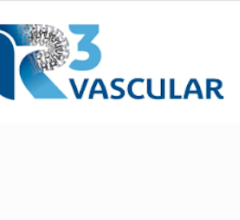
 November 07, 2024
November 07, 2024 

